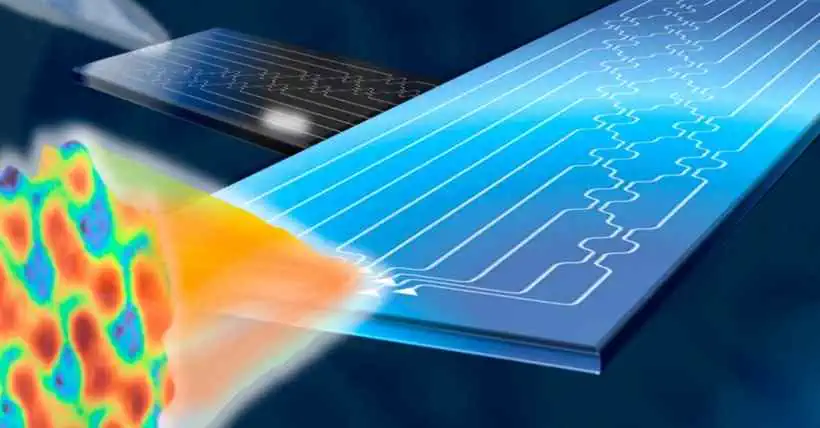The latest development in optical wireless technology has unveiled a groundbreaking innovation employing photon chips. These chips possess the remarkable capability to manipulate light effectively, thereby enhancing the transmission of data. This breakthrough holds immense significance for the evolution of future wireless networks and the rapid processing of high-speed data.
1
Advancements in Photon Chips for Enhanced Data Transmission
Pioneered through a collaborative study involving Politecnico di Milano, Scuola Superiore Sant’Anna, University of Glasgow, and Stanford University, as documented in the esteemed journal ‘Nature Photonics,’ the creation of photon chips marks a milestone achievement. These chips are designed to compute and optimize the ideal form of light rays, enabling them to navigate through diverse and dynamic environments seamlessly.
2
Implications for Future Networks and Data Processing
The development of advanced photon chips stands as a significant milestone in optimizing the transmission of light within optical wireless systems. These chips play a pivotal role in shaping the landscape of future 5G and 6G networks. They signify a shift towards more energy-efficient analog technology and offer expansive applications in fields concerning high-speed data processing and communication.
3
Addressing Sensitivity Challenges in Optical Wireless Systems
One of the primary challenges faced in optical wireless systems revolves around the high sensitivity of light to any form of obstruction, even minuscule ones. This sensitivity is akin to how we perceive objects through frosted windows or fogged-up glasses. In such scenarios, while the information remains intact, it becomes distorted and exceedingly challenging to retrieve.
4
Smart Transceivers: Revolutionizing Light Beam Efficiency
The devices developed through this research utilize small silicon chips as smart transceivers. Operating in pairs, these chips possess the ability to autonomously compute the optimal shape required by light beams for maximum efficiency in traversing varied environments. Notably, these chips can generate multiple overlapping light beams, each possessing its unique shape, ensuring guidance without interference, thereby significantly amplifying transmission capacity.
5
The Remarkable Technological Capabilities
Francesco Morichetti, the head of the Photonics Devices Laboratory at Politecnico di Milano, elaborated on the chips’ capabilities. He emphasized that these chips function as mathematical processors, swiftly and efficiently computing using light while consuming minimal energy. Their operational principle involves basic algebraic operations such as summation and multiplication, directly manipulating light signals transmitted through integrated micro-antennas on the chip. This technology presents numerous advantages, including simplicity in processing, high energy efficiency, and an expansive bandwidth exceeding 5000 GHz.
6
Reverting to Analog Technology for Enhanced Efficiency
Andrea Melloni, director of the Micro Nano Technology Center Polifab at Politecnico di Milano, highlighted the necessity of reverting to analog technology amidst the current digitized era. He emphasized that while digitization enables complex processing, the surge in data volume renders these operations increasingly unsustainable in terms of energy consumption and computation. Melloni indicated that the chips developed in this study operate akin to dedicated circuits (analog coprocessors), envisioning their role as the driving force behind future 5G and 6G wireless interconnection systems.
7
Expanding Applications and Future Prospects
Marc Sorel, a professor of electronics at the TeCIP Institute (Institute of Telecommunications, Information, and Photonics) at Scuola Superiore Sant’Anna, emphasized the critical role of optical processors in numerous application scenarios. These scenarios encompass mathematical accelerators for neural morphology systems, high-performance computing (HPC), artificial intelligence, quantum computing, cryptography, advanced localization, positioning, sensor systems, and overall systems necessitating high-speed processing of voluminous data.
The emergence of photon chips in optical wireless technology stands as a transformative leap, promising enhanced data transmission capabilities and revolutionizing the landscape of future networks and high-speed data processing. These advancements hold vast potential across various domains, propelling us toward a future brimming with efficiency, speed, and unparalleled technological advancements.









